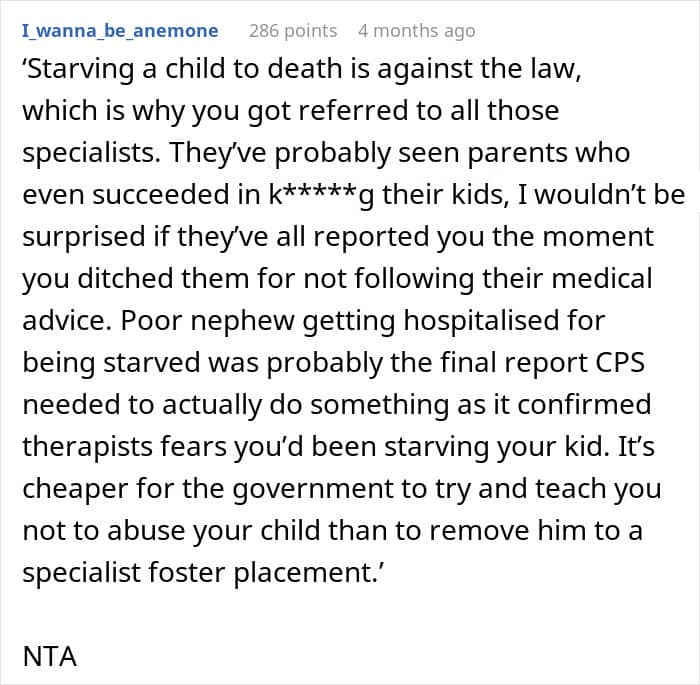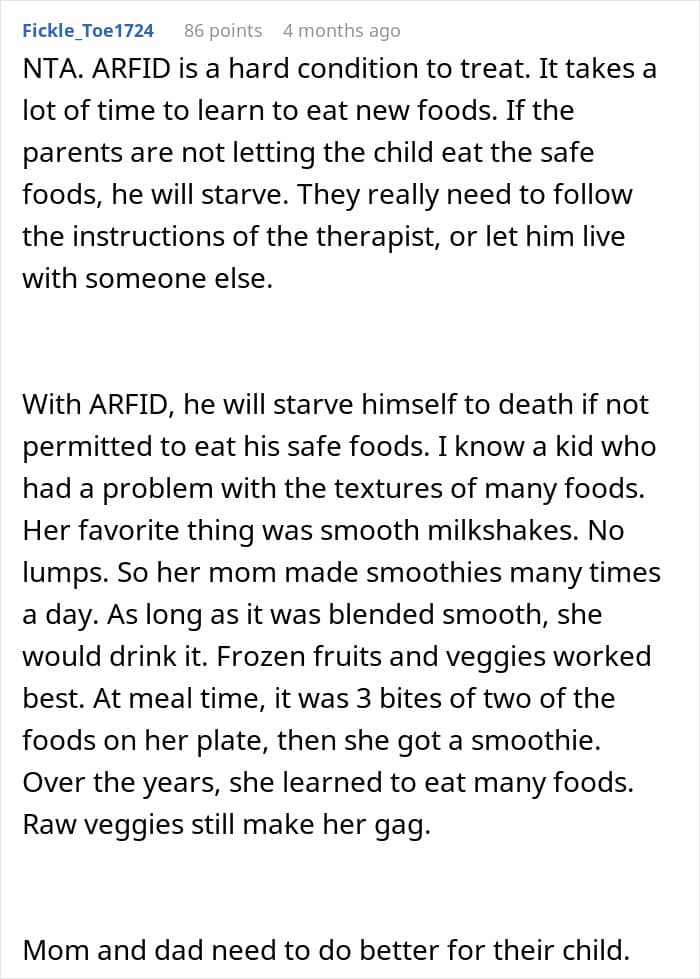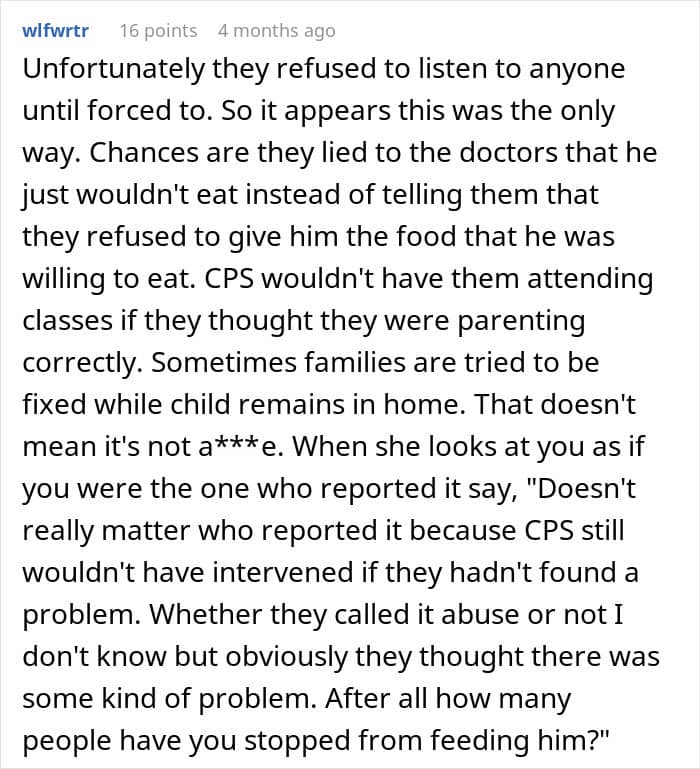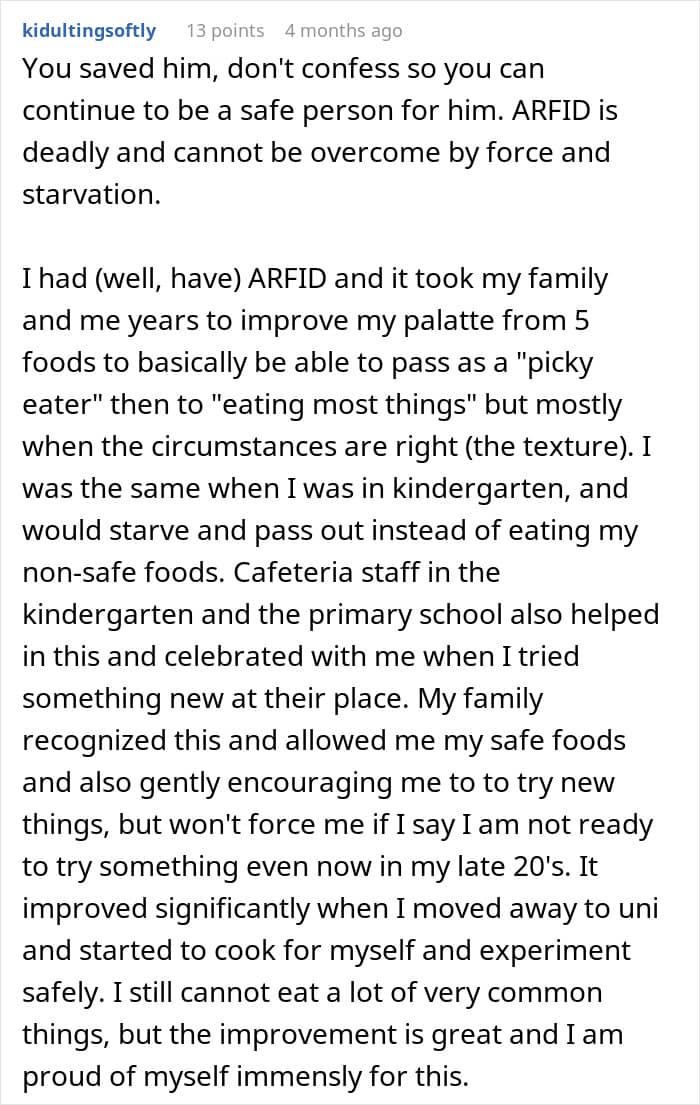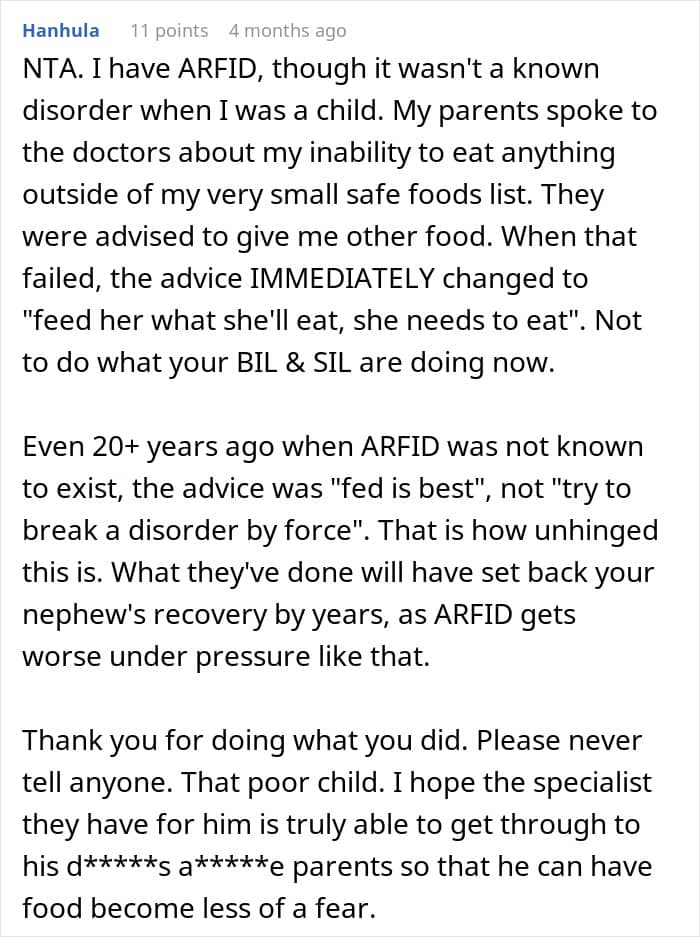It’s very common for kids to be slightly fussy about their food, as some might be more sensitive to taste, smell, or textures. However, if their aversion to eating or trying new foods results in undernourishment and starts limiting their lives, it can become a serious problem.
One that these parents faced but refused to accept. So instead of getting the help their kid needed, they tried taking away the foods he liked in hopes he would start eating other things. After numerous hospitalizations due to not enough nourishment, their in-laws decided to do something about it and reported them to CPS, which, well, caused quite the stir-up.
Scroll down to find the full story and conversation with board-certified specialist in pediatric nutrition Tok-Hui Yeap, pediatric occupational therapist and feeding specialist Marielle Marquez, and registered dietitian Dima Salhoobi, who kindly agreed to share their insights on fussy eaters.
RELATED:Sometimes, picky eating can be a sign of a bigger problem

Image credits: The Yuri Arcurs Collection / freepik (not the actual photo)
As it happened with this family, who had many difficulties dealing with it, leading to CPS report



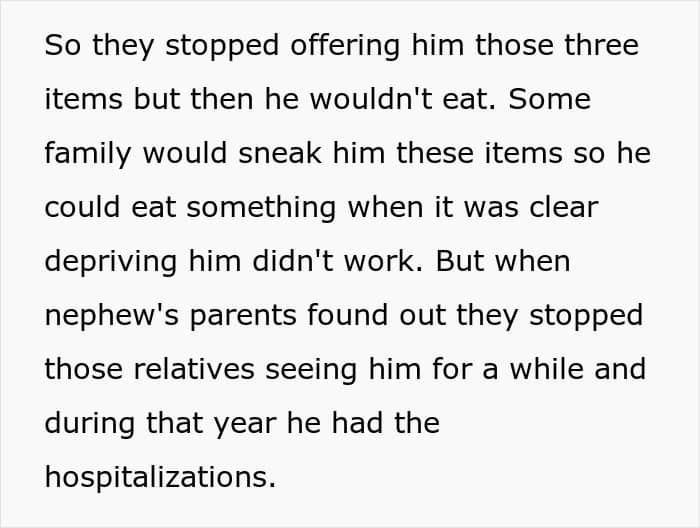






Image credits: wavebreakmedia_micro / freepik (not the actual photo)




Image credits: Ok_Repeat_8017
One in four 1.5-year-olds and 3-year-olds are picky eaters

Image credits: Tamara Kirsanova / freepik (not the actual photo)
Many children go through a phase of picky or fussy eating. It’s a natural stage of development that usually appears between 1.5 and 2 years of age. In fact, a study of 4,000 children found that one in four 1.5-year-olds and 3-year-olds were picky eaters.
“Picky eating can be a normal phase for many toddlers and young children. If they are particular about which foods they are willing to eat but still eat a wide enough variety that their nutritional needs can be met, I wouldn’t be concerned,” says pediatric occupational therapist and feeding specialist Marielle Marquez.
For some children, this phase passes on its own if parents handle it in a supportive and encouraging way. However, for others, picky eating can linger and peak at ages 7 to 8 or even be a sign of a bigger issue.
“While some food selectivity is normal in early childhood, persistent picky eating can lead to nutrient deficiencies, poor growth, and even ARFID. Research shows that children with extreme food aversions are at higher risk for academic struggles, fatigue, and frequent school absences due to inadequate nutrition. Early intervention is key—don’t wait for picky eating to escalate,” warns registered dietitian Dima Salhoobi.
Something that’s important to keep in mind is that picky eating and ARFID are two different conditions and shouldn’t be grouped together.
“Children who are average picky eaters will often grow out of their pickiness as they get older or when parents provide a positive feeding environment. However, children with ARFID will need a team of feeding experts and psychologists to help address their underlying issues, whether they stem from medical conditions, psychological trauma, sensory sensitivities, aversions or lack of interest in eating,” explains board-certified specialist in pediatric nutrition Tok-Hui Yeap.
“Parents should try to maintain a relaxed atmosphere around mealtimes”

Image credits: EyeEm / freepik (not the actual photo)
Most of the time, it’s not the parents’ fault that a child is diagnosed with ARFID, as almost 80% of a person’s chances of having ARFID come from genetic makeup. That said, children’s environment can contribute to it, but it has much less influence than the genes a person is born with.
“ARFID is an eating disorder that is associated mostly with psychological fear of consequences/anxiety (example: fear of choking, throwing up or physical abuse), sensory aversions (sensory processing disorders, can’t stand chewing sounds or can’t stand texture inside mouth), and/or medical conditions (such as allergies or GI disorders) that lead to fear of eating,” explains Yeap.
Salhoobi also adds a few more contributing factors to picky eating and ARFID:
Parental modeling (e.g., vocalizing dislikes, avoiding certain foods).Sensory sensitivities (texture, smell, or taste aversions).Negative mealtime dynamics (pressure, punishment, or excessive bargaining).Lack of food exposure (children need repeated, low-pressure opportunities to try new foods).
What parents can do to help their kids who struggle with eating is to avoid forcing or pressuring them to eat, says Marquez. “The best thing to do is continue to gently expose them to new foods through meal preparation activities, food play, gardening, and grocery shopping together. Using food chaining strategies and offering foods very similar to those they already prefer is also helpful. If your child has severely restricted food preferences, seeking professional support can be very helpful.”
Readers agreed that reporting parents to CPS was the right thing to do


